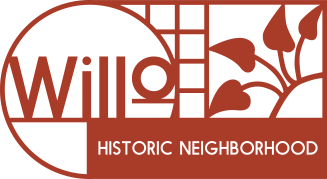January Phoenix Planning Commission Update
Published on 01/12/2018 • Posted in Development & Zoning
By Andrea Katsenes, Vice Chair of the Phoenix Planning Commission
Planning Commission held their monthly meeting on January 4, 2018 in the City Council Chambers.
Below are a few interesting cases that might be of interest to Willo neighbors.
- Rezoning case Z-17-17-4/Z-SP-3-17-4
Together both cases are located approximately 130 feet east of the southwest corner of 7th Avenue and Turney. The cases requested a change from C-2 SAUMSO to C-2 HGT/WVR SAUMSO to allow Commercial uses/self-storage specifically, with a height waiver for up to 56 feet.
The Encanto Village approved both cases and received support from the City Planning staff.
Interestingly, at first some neighbors in the immediate area were concern with having self-storage in the area, but the case applicate/site owner reached out directly to the neighborhood and organzed a design competition for the building. Three architects presented three different designs, and the citizen panel selected the winning building design (which incorporated a elements from the different submissions). The building will also offer community meeting space on the ground floor that can be utilized by the neighborhood. A great example of the neighborhood and building applicant coming together to put a great project together!
This case passed the Planning Commission unanimously, and will move forward for City Council consideration later in January.
- Initiation of a Historic-Landmark for Eastlake Park, 11.28 acres located at the southwest corner of 16th Street and Jefferson Street (1549 E. Jefferson Street).
The Planning Commission voted unanimously to begin the process (initiate) of designating the Eastlake Park a Historic-Landmark, which is only for properties of exceptional significance. These landmarks are provided an extra level of protection with a potential three-year delay in demolition rather than one year with the HP Overlay.
Here is a bit of background on the Eastlake Park.
Originally known as “Phoenix Park,” Eastlake Park was developed in the 1890s by Moses Sherman as an area for residents to enjoy while waiting for a car on the trolley line that extended to the park. As early as 1903 the park was referred to as “Eastlake,” probably in reference to the lake that existed there. The lake was one of the park’s most interesting aspects, and a few menacing alligators called it home. Eventually, the lake was filled in, replaced by a swimming pool everyone could enjoy. The park was annexed to the Phoenix townsite in 1910 (can you believe the City of Phoenix boundaries had not extended that far at that time?) and was purchased by the City in 1914.
Eastlake Park played an important role in the daily life of the African American community as well as hosting important cultural events. This is where a majority of recreational activities for African Americans took place on the east side of Phoenix. Eastlake Park was a gathering place for neighborhood meeting, picnics, concerts, sports, and other recreational activities.
In fact, several significant events occurred at Eastlake Park in the early 1900s. Nationally recognized African American leader Booker T. Washington spoke at the park on September 22, 1911 at the “Great Emancipation Jubilee.” In June, 1921, the community celebrated “Emancipation Day” or “Juneteenth” for the first recorded time, at Eastlake Park. (The Juneteenth Celebration marked the anniversary of rural African Americans in Texas learning that slaves had been emancipated.) During the celebration, over 500 African Americans went to Eastlake Park to participate in parades, hear speeches, listen to music and enjoy picnics.
In 1933, under a bond, approved by Phoenix voters, Eastlake was designed a “Class B” district recreational park “for the colored citizens of the community.” At this time, the park already contained a swimming pool (the second public pool in Phoenix) and a pump house. Thanks to the bond dollars, a wading pool, playground equipment, tennis court, two horseshoe courts and a baseball diamond were added. A bath house was completed under a separate Works Progress Administration grant in 1938. The following year, the City added lights swings, sandboxes, sports facilities and equipment. The park also gained an amphitheater, tennis courts and a recreation hall where African Americans met to dance and socialize. The improvements at Eastlake Park are examples of the many types of projects funded through the New Deal federal agencies in the Phoenix area.
During the civil Rights Era, many protests and demonstrations were held at Eastlake Park. In 1948, a crowd of approximately 1,000 people listened to African American activist Claudian Jones speak about equal rights. In 1963, the local county chapter of the NAACP held a demonstration to protest discrimination in employment, education, and public housing in Phoenix. That same year nearly a thousand Freedom Marchers assembled in Eastlake Park and marched to City Hall with their list of grievances. They met with Mayor Sam Mardian, who appointed a Human Relations Commission and adopted an equal employment creed for the City.
It is due to this rich City history and exceptional importance as a gather place for the African American community for over 100 years, that City Historic Preservation staff are recommending this upgrade to Landmark, and with the enthusiastic vote from the Planning Commission, that body has begun the initiation process to fulfil this request.
